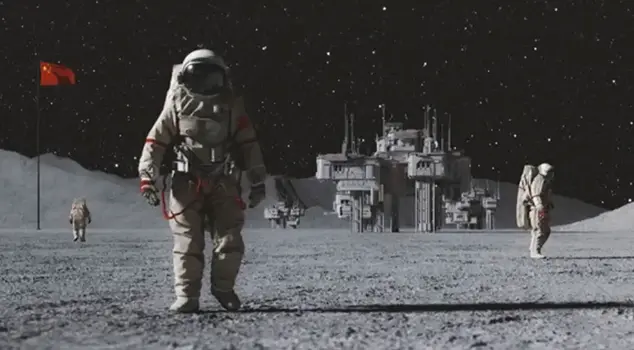
24.10.2025 18:33
China's Chang'e-6 mission, conducted on the far side of the Moon, has made groundbreaking contributions to the scientific community. Within the samples brought back from the Moon, a rare type of meteorite known as CI chondrite, which has been in contact with water, was identified. This discovery sheds new light on theories regarding how water reached the Moon's surface and even the Earth, while also providing significant clues about the formation of the Moon and the early period of the Solar System.
The 'Chang'e-6' mission conducted by China on the dark side of the Moon is back in the spotlight with a groundbreaking new finding.
TRACES OF METEORITES IN MOON SAMPLES
A significant development has occurred regarding the 'Chang'e-6' mission, which has been closely monitored by the world and has sparked discussions with claims from some circles that "China is hiding something on the Moon." Chinese researchers have found fragments of a meteorite that once contained water during this mission conducted on the dark side of the Moon.
FIRST DETECTION OF CI CONDRITE MATERIAL
According to ScienceAlert, researchers from the Chinese Academy of Sciences examined the Moon samples brought back to Earth in June 2024. The analyses revealed the presence of carbonaceous chondrite (CI chondrite) fragments that had been in contact with water. These types of meteorites are among the rare examples that can continue their path without burning up upon entering the atmosphere.
PROVED THAT WATER-RICH ASTEROIDS CAN REACH THE MOON
This finding proved that water-rich and porous asteroids can reach the surface of the Moon. Experts state that approximately 20% of the mass of asteroids in the CI chondrite class consists of hydrated minerals. Only 1% of the known meteorites on Earth belong to this group. The fact that such a meteorite that struck the Moon left traces without evaporating or melting makes the discovery even more significant.
SHEDDING LIGHT ON THE ORIGIN OF WATER
The article published in the PNAS journal stated that approximately 30% of the samples collected by Chang'e-6 consist of carbon-rich materials. Researchers expressed that the meteorite may have come from the outer Solar System and that the findings provide new clues about how water reached the surface of the Moon.
Scientist Lin Mang stated that the results represent "an important milestone in understanding how water spread on the Moon's surface." The findings also support theories that water was transported to Earth by carbon-rich asteroids billions of years ago.
DETAILS OF THE HISTORIC MISSION
The samples collected by the Chang'e-6 spacecraft from the South Pole-Aitken Basin of the Moon are being analyzed using advanced microscopy and spectrometry techniques. The return capsule safely landed in Inner Mongolia in June last year. Chinese state media described this achievement as "an unprecedented step in the history of human exploration of the Moon." The analysis of the collected samples is still ongoing at the Chinese Academy of Sciences. Experts indicate that these studies could provide new answers to critical questions regarding the formation of the Moon and the origin of water.